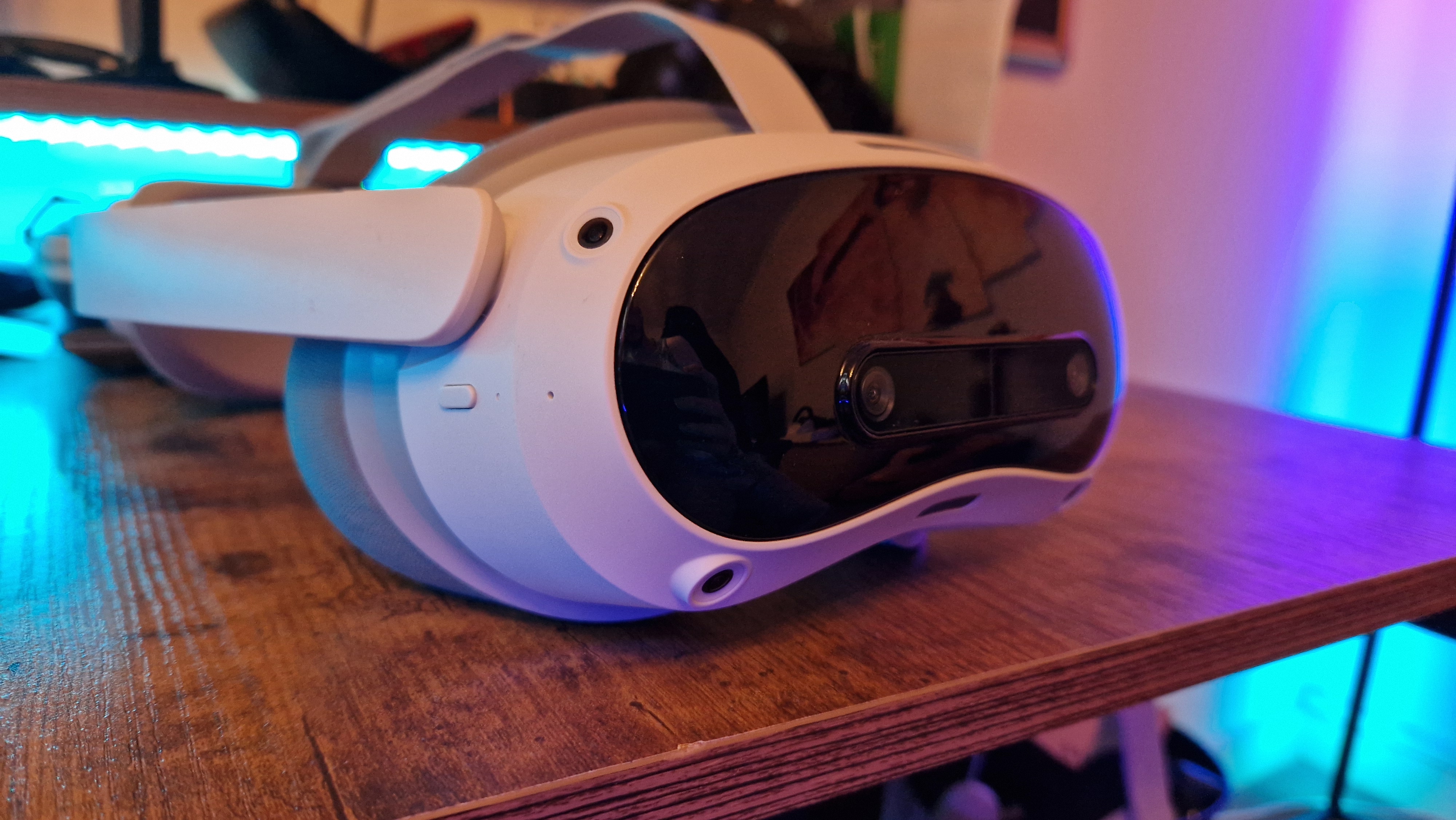GamesRadar+ Verdict
The Pico 4 Ultra is an excellent standalone VR headset for gaming. It has a lightweight, comfortable feel on your face, and some excellent gaming specs that even surpass the Quest 3 it’s been designed against. This is a headset that deserves better than the underdog reputation it’s launching with. It’s a shame the Pico 4 Ultra isn’t available in the US, because it’s the Quest 3 competitor the industry needs.
Pros
- +
Great visuals and Pancake lenses
- +
Lightweight and secure fit
- +
Practical design
- +
Competitive price
Cons
- -
Controller tracking could be better
- -
Slightly more limited storefront than Meta
- -
Speakers could be better, and there’s no 3.5mm headphone jack
Why you can trust GamesRadar+
The Pico 4 Ultra feels like an act of defiance. After the Pico 4 struggled to compete in a standalone VR market that’s dominated by Meta’s Quest devices, rumors circulated late last year that the brand would be shut down. Now, donning a new set of armor and re-entering the battle is the Pico 4 Ultra, a mixed-reality headset with better specs than the Meta Quest 3.
The fight to create the best VR headset has been getting more heated in recent years, but Meta still holds a monopoly for VR gamers who have no interest in tethering to a PC or console. Of course, there’s the Apple Vision Pro, but that’s not exactly designed for gaming, which has become clear the longer it's been on the shelves. Moreover, it’s not affordable for the majority of shoppers, so the sector is still crying out for a device that can truly rival the Quest 3.
At least in Europe and Asia, the Pico 4 Ultra is that rival. With 256GB of storage and a UK price of £529, it lands between the Quest 3’s two models in terms of both price and space for games. Beyond its clear competition, however, this is an excellent VR headset that deserves better than the underdog reputation it’ll launch to.
Design
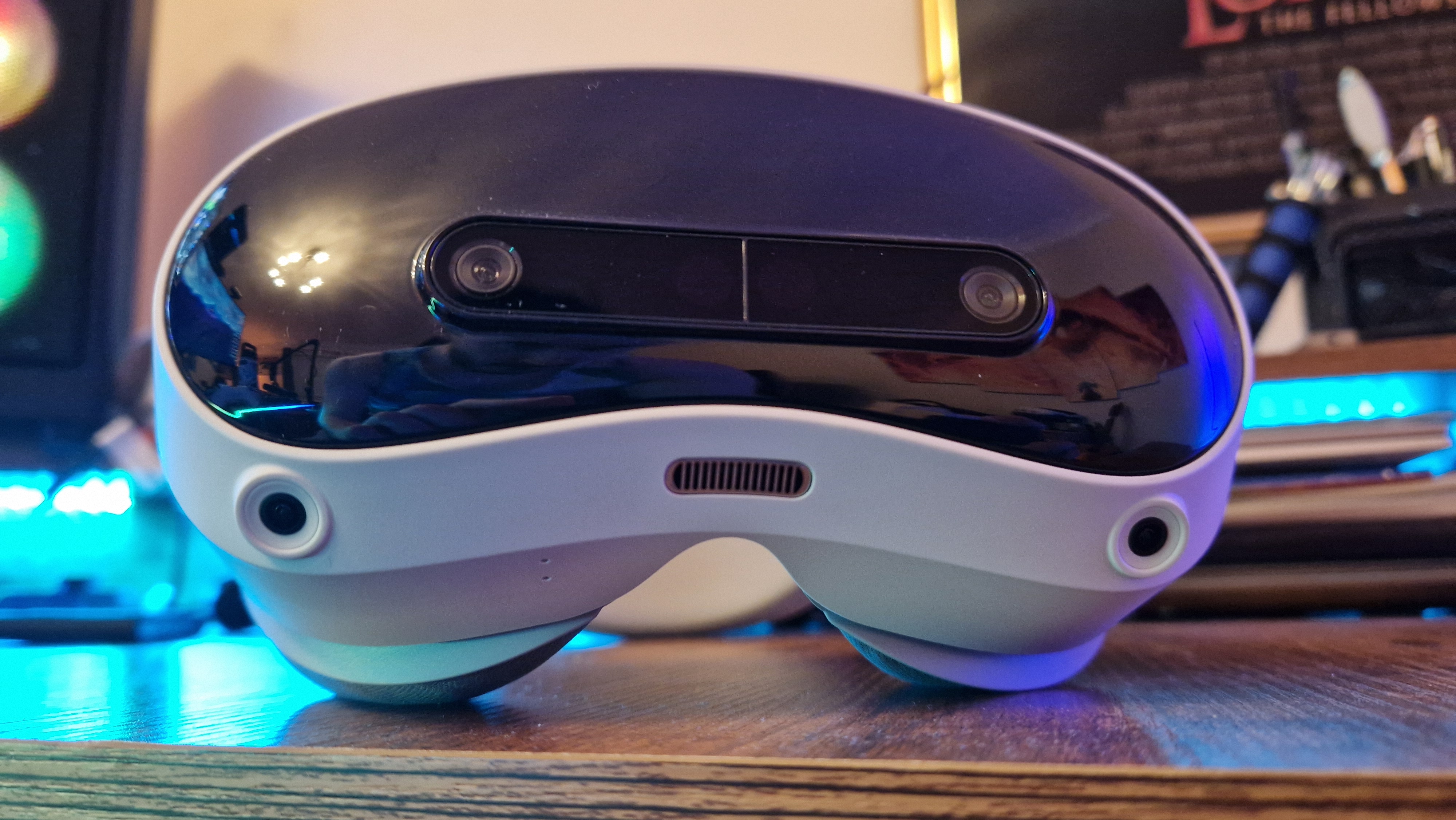
I think my favorite thing about the design of the Pico 4 Ultra is how well-balanced its weight is. The 580g mass of this device is actually heavier than the Meta Quest 3, but it feels so much lighter on your face because the design spreads the pressure across the whole head. There’s practicality to the design here as well, from the headband that actually folds upward so you can fit it in a way that suits you, to a facial interface that clicks on and off with ease, and doesn’t feel like you’re snapping vital bits of plastic you’ll depend on later.
On the left-hand side of the headset, you’ll find a USB-C port for charging your device, but that’s it. It’s a bit disappointing there’s no 3.5mm headphone jack, particularly because, as I’ll come onto, the integrated speakers on the sides of the headband aren’t the best. Still, volume control integrated into the headband, as well as a simple power button, add some easy utility.
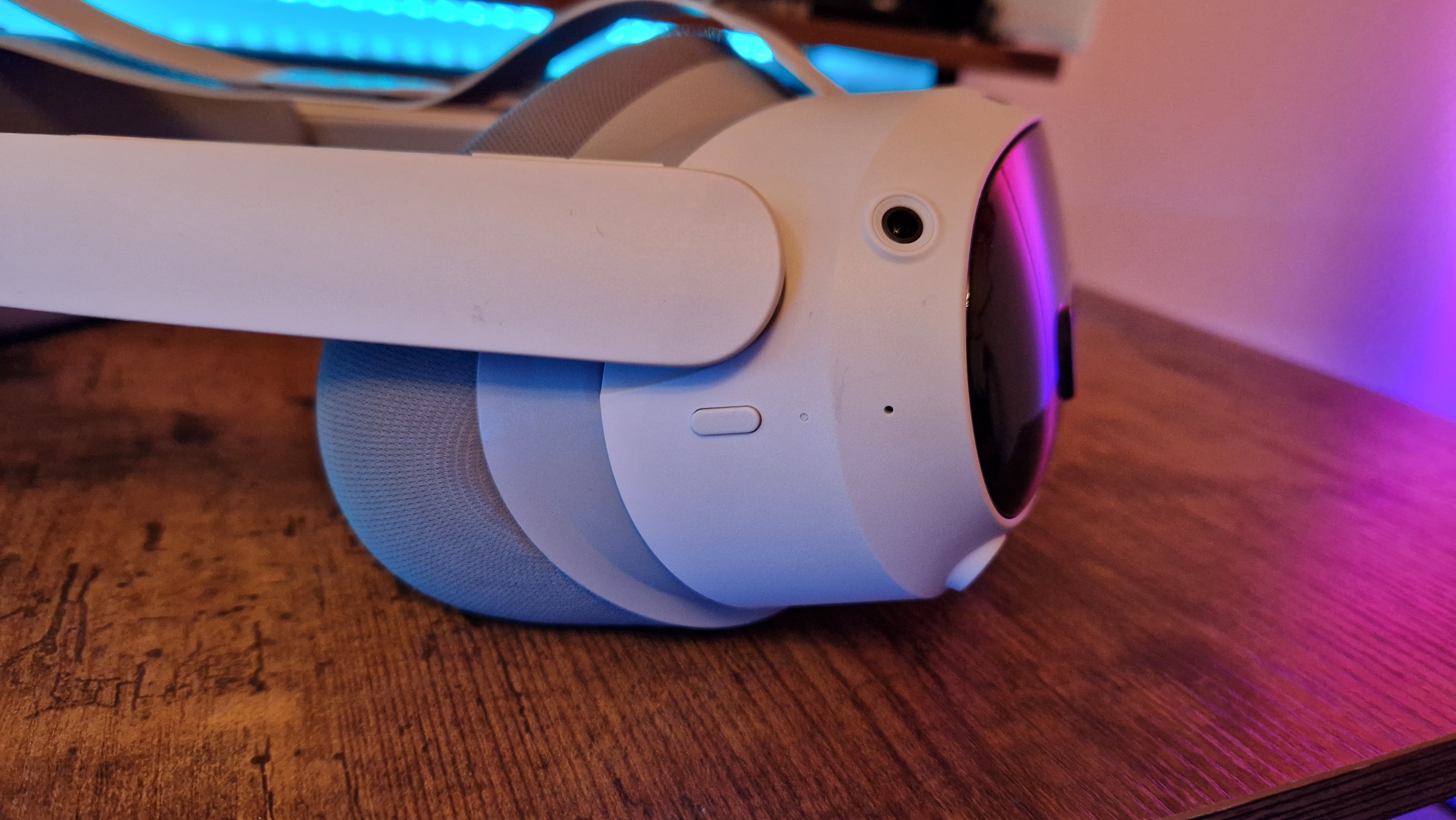
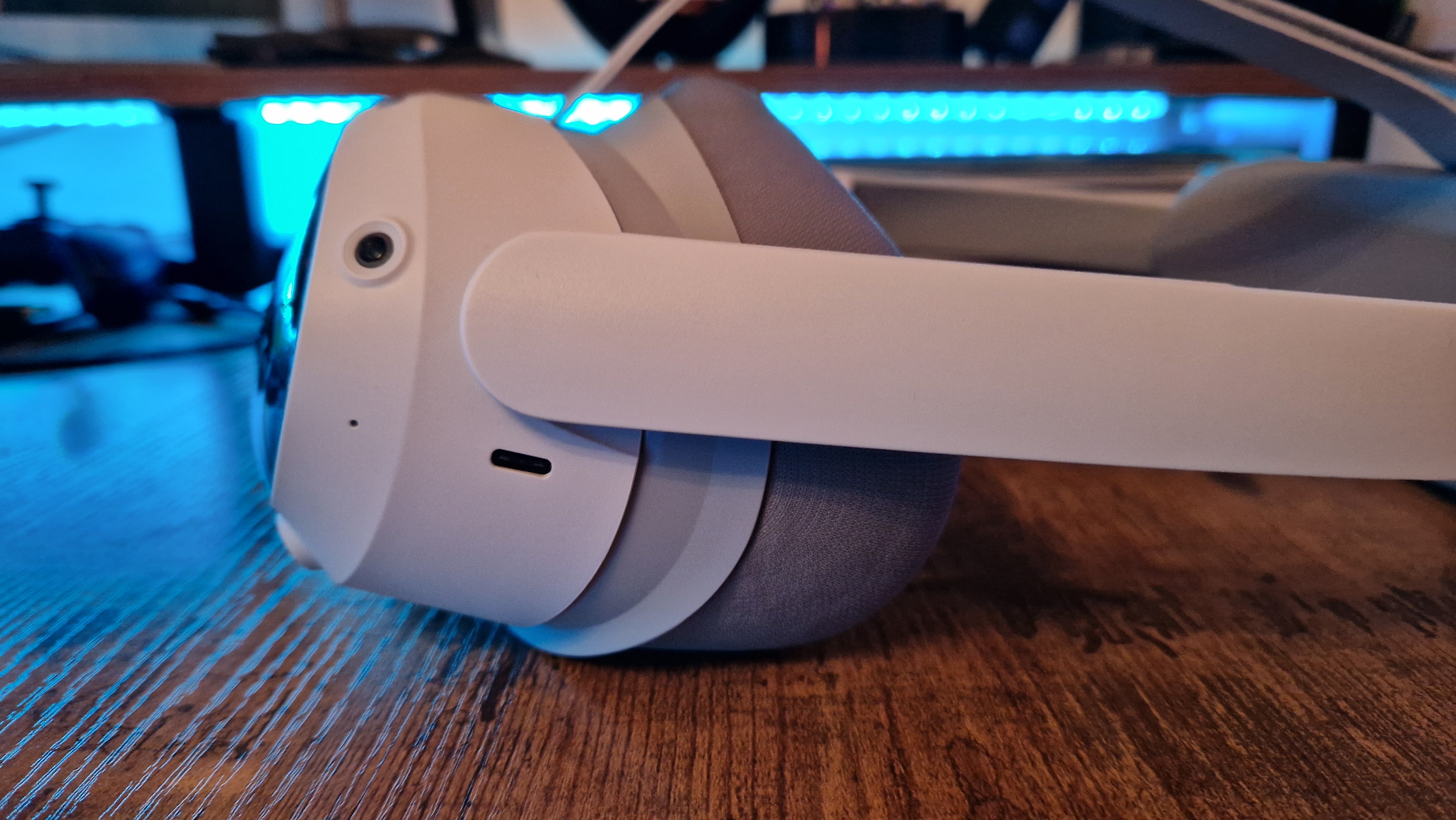
The back of the head strap features a turning dial that tightens or loosens the fit - a bit like some of the best Meta Quest accessories do. I love how secure the Pico 4 Ultra feels, even when I was playing games with more rigorous head movements, I never felt the headset budge, and it certainly didn’t have the issue PSVR 2 has where it slides down your forehead and out of the sweet spot for the lenses. I also love that wearing glasses with the 4 Ultra is no problem at all, and unlike the Quest 3, it doesn’t knick my specs every time I take it off.
The front of the headset has a sleek look, with a reflective, black facial panel that holds a central camera array, and above and below it lie some vents for cooling. You’ll also find four peripheral cameras for tracking and an integrated depth sensor that will help keep you in a safe playing space.
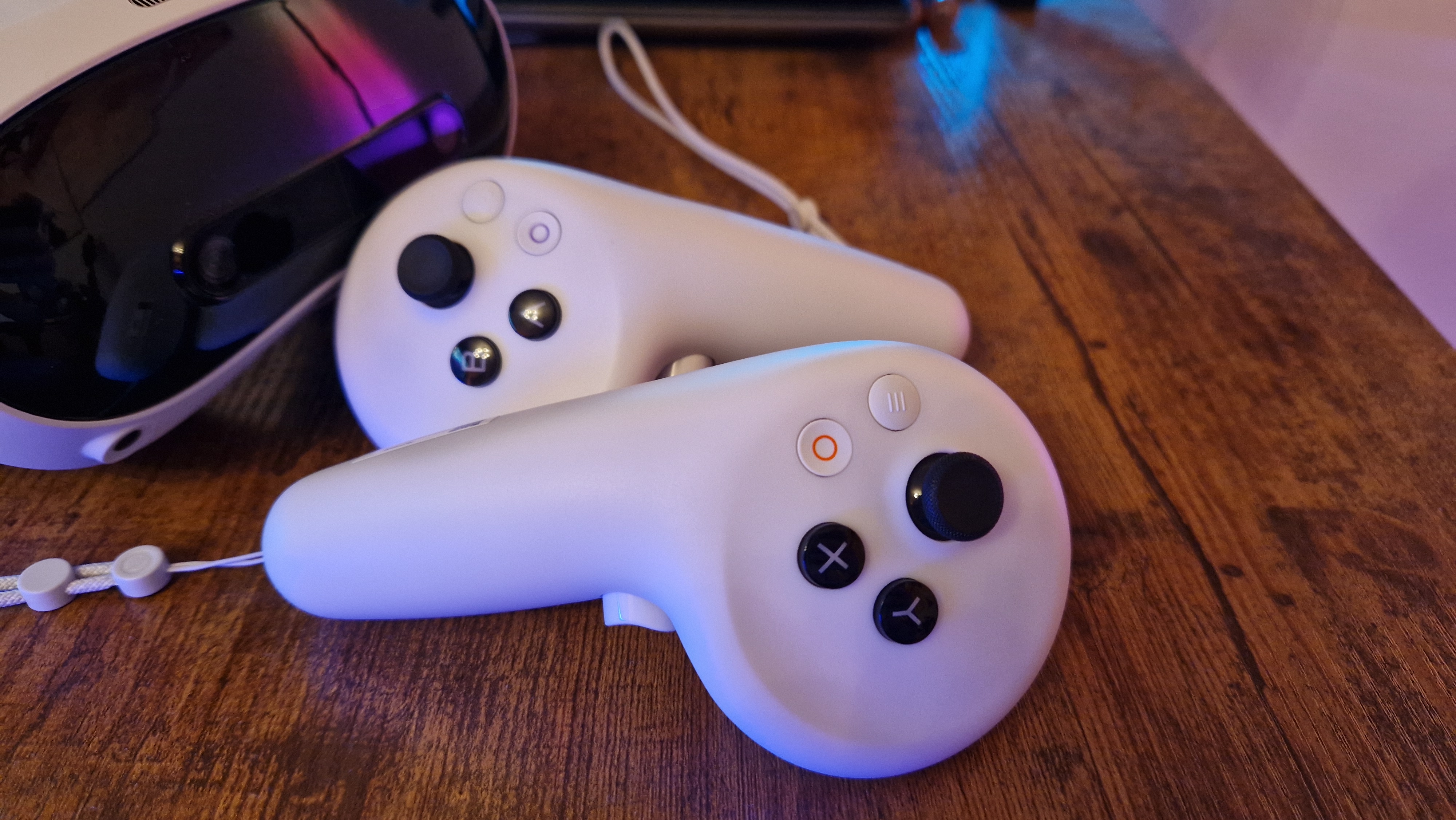
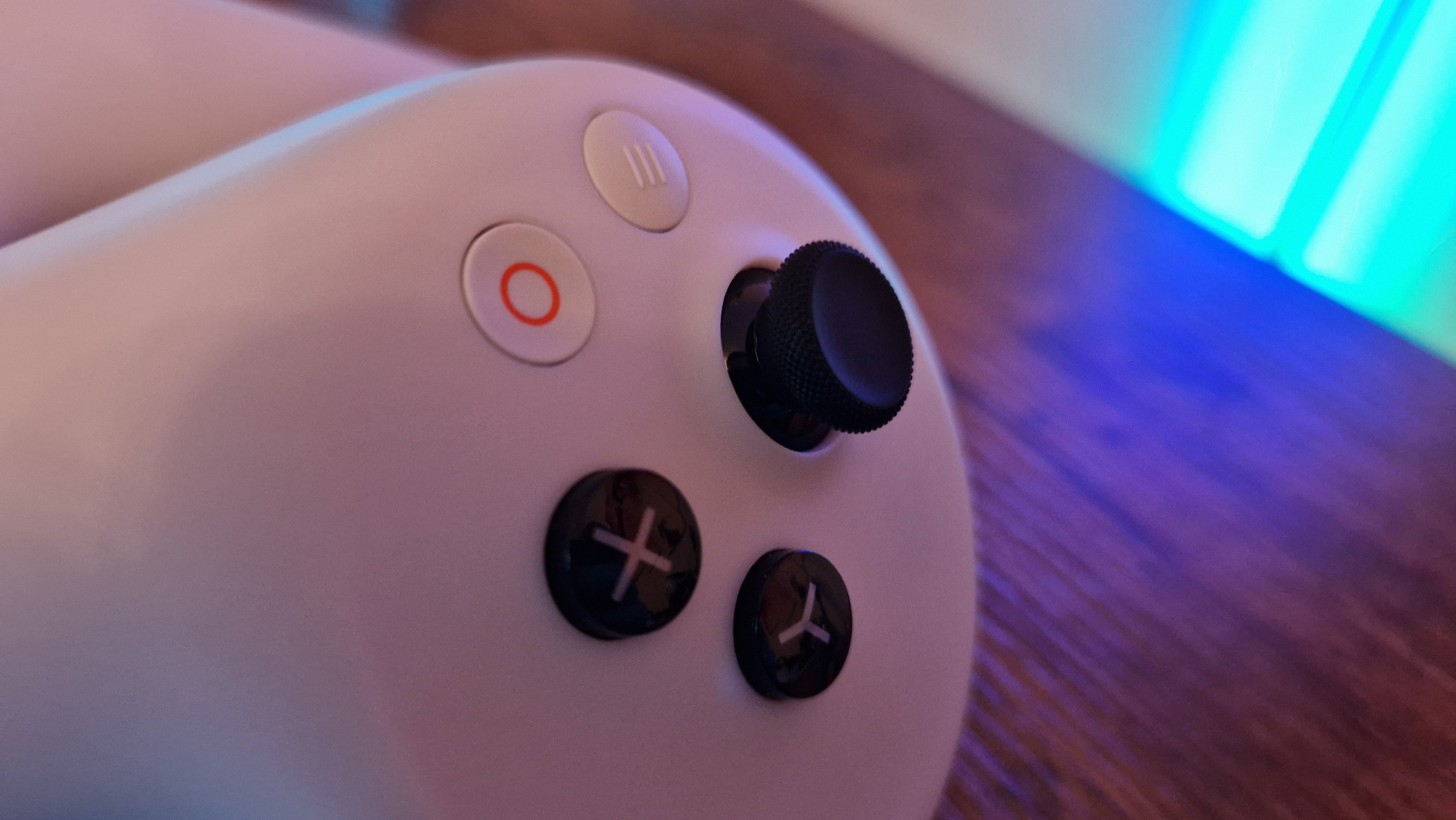
Then there are the controllers to think about. Noticeably longer than the Quest 3’s controllers, they now abandon their tracking rings. They have all the usual buttons VR controllers need, plus some extras for in-game menus. They also feature an Ultra-wideband vibrating motor and are powered by a single AA battery each.
Features
Powering this device is the same Qualcomm Snapdragon XR2 Gen 2 processor you get in a Meta Quest 3. Similarly, two LCD displays with a 90Hz refresh rate can be viewed through pancake lenses. In a fun turn, you can change the inter-pupillary distance between the two lenses electronically, but not manually. Pancake lenses here have the same wide area of focus offered by the ones in the Meta Quest Pro and Quest 3, and a 105-degree FOV means it’s actually pretty tricky to spot the borders of the display when you’re massacring Freds in Arizona Sunshine 2.
In an upgrade from the Quest 3, you get 12GB of RAM in the Pico 4 Ultra, up from 8GB. This is some really solid futureproofing since more memory means the device will be capable of running larger levels that will inevitably start to appear in VR games as time moves on.
| Processor | Qualcomm Snapdragon XR2 Gen2 |
| Resolution | 2160 x 2160 per eye |
| Refresh rate | 90Hz |
| Field of View | 105 degrees |
| Sensors | iTOF Depth sensor, Two MR cameras |
| Storage | ABS |
| Cameras | Two 32MB cameras |
| Audio | Integrated speakers |
| RAM | 12GB LPDDR5 |
| Weight | 580g |
| Eye Tracking | None |
| Battery | 5700mAh (2-4 hours depending on use) |
| Connectivity | Wi-Fi 7, USB-C |
The Android OS runs smoothly, and loads quickly from startup. Thanks to Wi-Fi 7 support, the headset is capable of downloading and installing games and applications in a flash. I found that the 5700mAh battery was able to power the Pico 4 Ultra for between two and four hours, depending on how I was using it. For watching streaming content on Disney Plus or Netflix, power consumption was pretty reliable. If another hour of my life flashed by like five minutes while playing Blade & Sorcery, I noticed the power going down faster.
There are mixed-reality features to be gained here, including the ability to take spatial videos and photos. I tested this to make sure it works, but I have no interest in using this as a feature, so I can’t speak to its prowess versus the Apple Vision Pro, for example. It’s there if you want it - I just wish every marketing campaign for this feature on any device didn’t need to be tilted at taking pictures of children’s birthdays, please. It’s just a bit creepy.
Performance
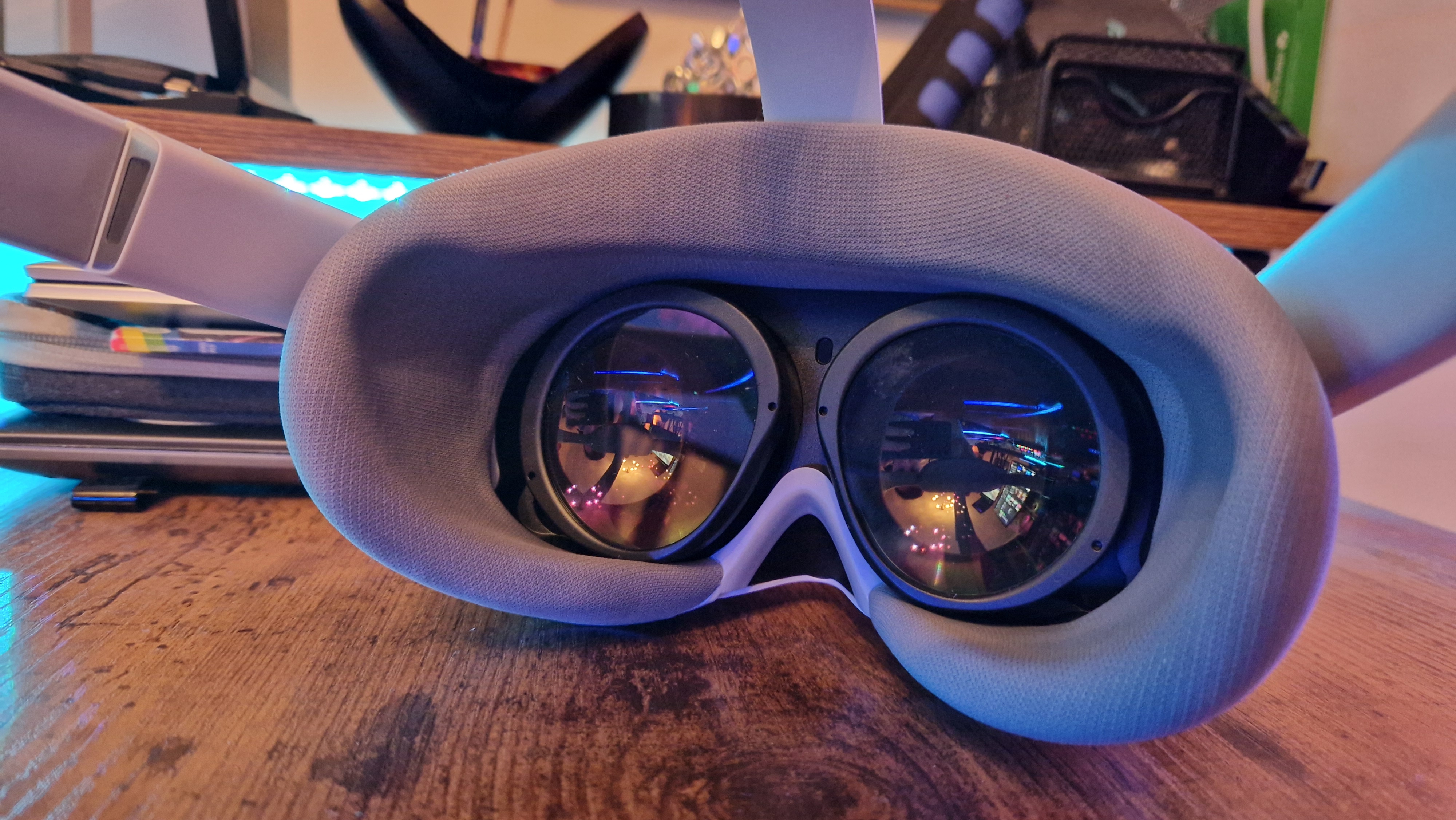
In a nice addition, you can get motion trackers that strap to your ankles for full body awareness. This is a nice bonus, and not something Meta offers at the time of writing.
Passthrough clarity is a big part of how a device like this can feel for uses other than gaming. Interestingly, when I used the Pico 4 Ultra immediately after the Meta Quest 3, I noticed a mixed bag. Passthrough clarity was actually better on the Pico 4 Ultra overall, but AR menus and the like seemed sharper on Quest 3. Rather amusingly, the Quest 3 gives you this bizarre blurry effect when an object passes from one of the peripheral cameras into the front, but the Pico 4 Ultra didn’t have that issue, potentially because its two 32MP frontal cameras are set wider than the ones on the Quest 3, and closer to their peripheral counterparts. The Quest 3 allowed me to read text on other displays like my phone or PC monitor, however, which the Pico 4 couldn’t do. As I say, it’s a mixed bag when you compare their passthroughs so directly.
I don’t use these devices for spatial computing, or indeed for many mixed-reality tasks. For me, these are pieces of gaming hardware, so while I can say the Pico 4 Ultra is more than capable of being used for productivity and wider scenarios, I mainly focused my testing time on playing games.
And play games I did. Despite reviewing VR headsets, I still often find myself suffering from motion sickness if I stay in a game for too long, but the Pico 4 Ultra finally broke that for me. Playing fully immersive games like Arizona Sunshine 2, Blade & Sorcery, and Red Matter 2, I was blown away at how light the headset felt on my head, and the lack of a squeezed feeling on my forehead definitely helped me to put queasy sensations to one side.
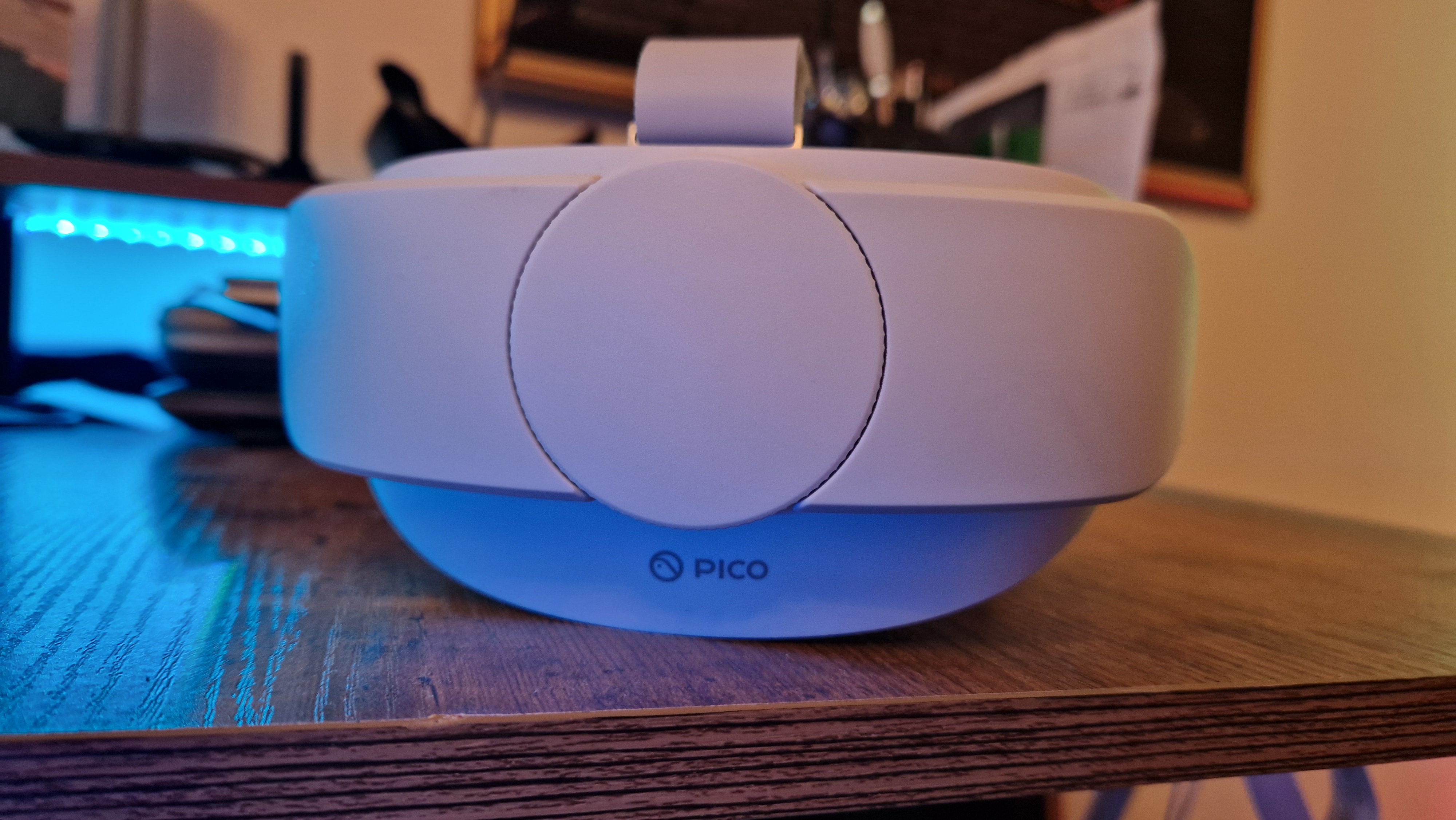
The displays on board the 4 Ultra have a 1920 x 1920 pixels per eye resolution, and I didn’t expect this, but they even gave the PSVR 2’s OLED displays a run for their money. Blacks obviously weren’t as vivid, but the clarity in Red Matter 2 was maybe some of the best VR visual fidelity I’ve come across. I’m sure Pancake lenses help since they offer a wider area of focus, but for a standalone headset that only has slightly better specs than the Quest 3, and no foveated rendering to speak of, I didn’t expect the sorts of graphical performance I found here.
After some immediate comparison tests, I also noticed more jaggy lines when gaming on Quest 3. From game to game, these things will differ on either headset, but I was really impressed to notice that more demanding games like Red Matter 2 actually ran smoother than Asgard’s Wrath 2 did on Quest 3, and I spotted more frame rate dips on Meta’s device for sure.
It was a shame, though, that the speakers on the Quest 3 proved to be far superior. The detail and power when playing a game on the Pico 4 Ultra were fine, but I would often find myself wondering if someone had turned the volume on the headset down when I loaded up a new game. I’ve always loved the speakers on the Quest 3, but the amount of detail they can convey to you when gaming without blasting your ears off is now a standout feature that Pico hasn’t been able to match.
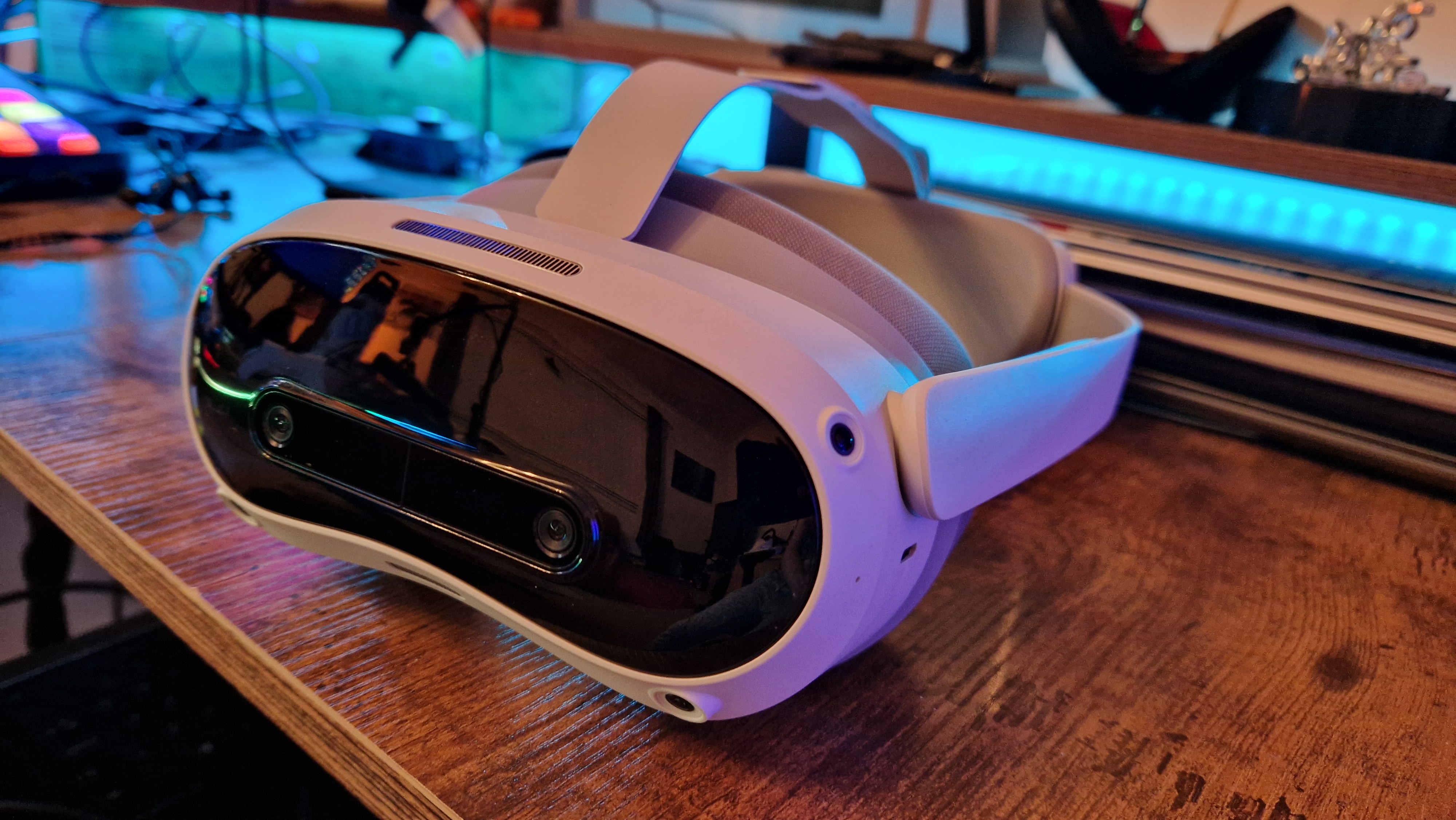
Controllers were a similar story. I prefer the longer feel of the Pico 4 Ultra’s controllers. Especially in Blade & Sorcery, the slightly larger thumbsticks help greatly with movement and turning, and having some textured menu buttons in addition is a really nice quality-of-life bonus. That said, the feedback the Quest 3’s controllers give you is much more vibrant, and although subtle vibration is never a bad thing, I’m a big believer in how accentuated feedback can aid game feel in VR.
Passthrough clarity was actually better on the Pico 4 Ultra overall, but AR menus and the like seemed sharper on Quest 3.
Perhaps the biggest gaming-based flaw I noticed with the Pico 4 Ultra was controller tracking issues. In lower lighting, the Pico 4 Ultra really struggled to track my controllers accurately. To be fair, the Quest 3 will struggle with that if you push it too far, but even slightly dim surroundings were a test for the Pico 4 Ultra. In fact, even in well-lit rooms, there were frequent moments in Blade & Sorcery where my in-game weapons weren’t pointing at the precise angle I needed them at, and in Arizona Sunshine 2 this impacted my ability to aim. It makes me wonder whether keeping the tracking rings on Pico’s controllers would have been a benefit. Then again, I didn’t get the chance to try the original Pico 4, so I can’t comment on how well tracking worked there.
In a nice addition, you can get motion trackers that strap to your ankles for full body awareness. This is a nice bonus, and not something Meta offers at the time of writing. To be honest, they weren’t something I spent much time with, mainly because I didn’t feel games needed them. Nonetheless, if you want to feel like you’re under house arrest and require full body immersion in your games, they work brilliantly.
Software & Privacy
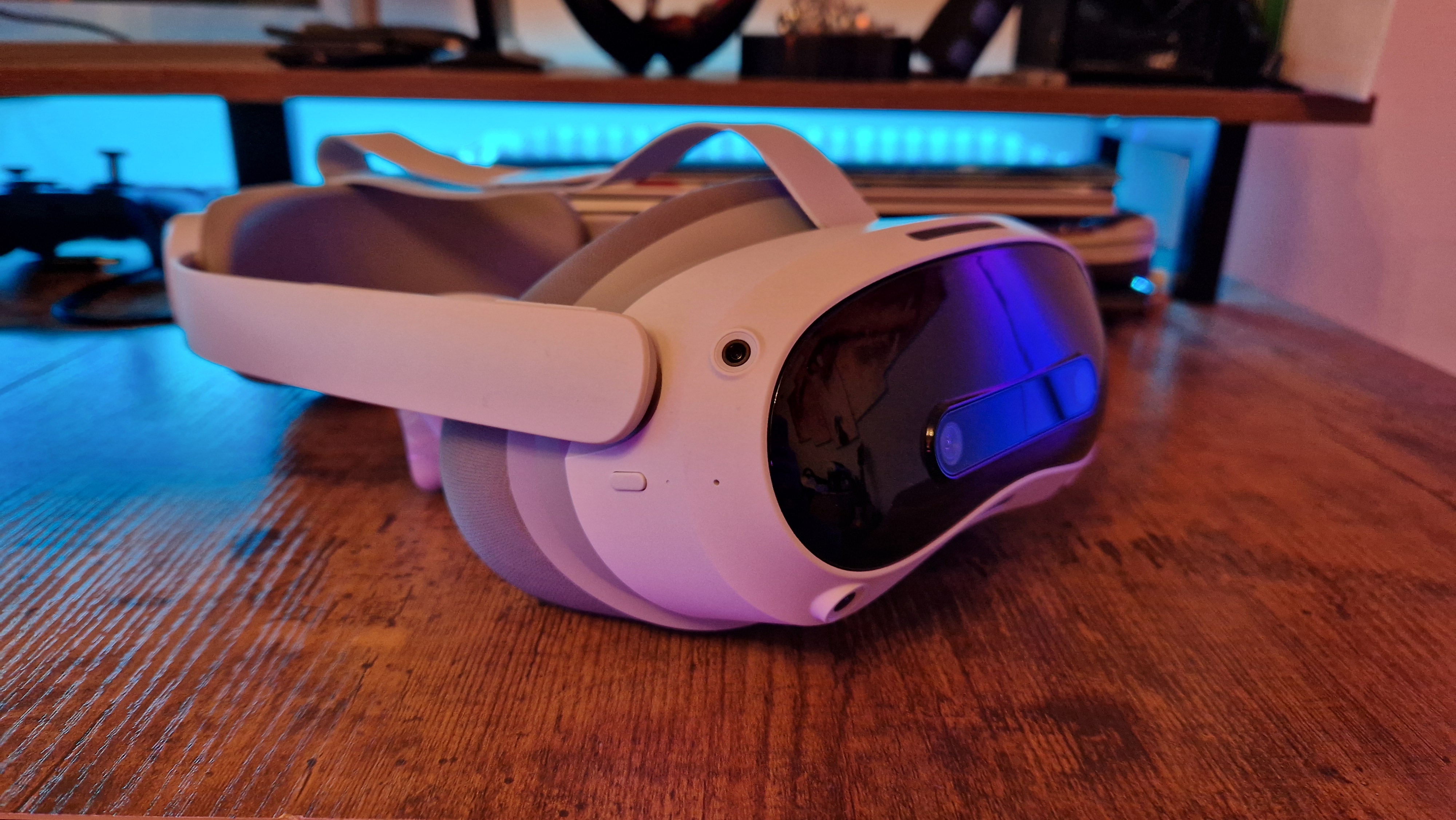
But is it better than the Quest 3? In terms of raw specs, the answer is a tentative yes.
Pico 4 has a more limited digital storefront than Meta’s Quest, but I was pleasantly surprised to see some excellent gaming entries included. A lot of big hitters from the last few years of VR gaming are present here, and the list isn’t as withdrawn as I had heard. There’s Creed, there’s The Walking Dead, there’s even The Last Clockwinder, which is probably my favorite VR game yet. Admittedly, there are some missing classics like Beat Saber and Super Hot, but with the ability to link up to a gaming PC and play SteamVR games, I don’t think anyone will be complaining. Missing games wasn’t something I was too worried about after some browsing through the digital store, but if it’s a concern for you, maybe look up the games that are available online before buying. I’m almost certain the library is going to expand as time goes on.
One of the biggest reasons I’d love to see a Meta Quest alternative do well is because, while I think Zuck’s company has cleaned up some of its data-mining acts since I reviewed the Quest Pro, I still have a lot of privacy concerns. I’d like to see a genuine alternative if, like me, you give Meta a wide berth. Unfortunately, Bytedance, the parent company behind Pico, is based in China and is responsible for bringing you a small startup social media platform known as TikTok. With that enormous data hoarder of a platform linked by ownership to this headset, I’d love to be more optimistic about how the Pico 4 Ultra collects information. I’m not able to say for sure how Bytedance is collecting data, and if it’s doing so from this headset, so for the record, I won’t. Still, at least with this on the shelves, you have a choice of a lesser evil.
Should you buy the Pico 4 Ultra?
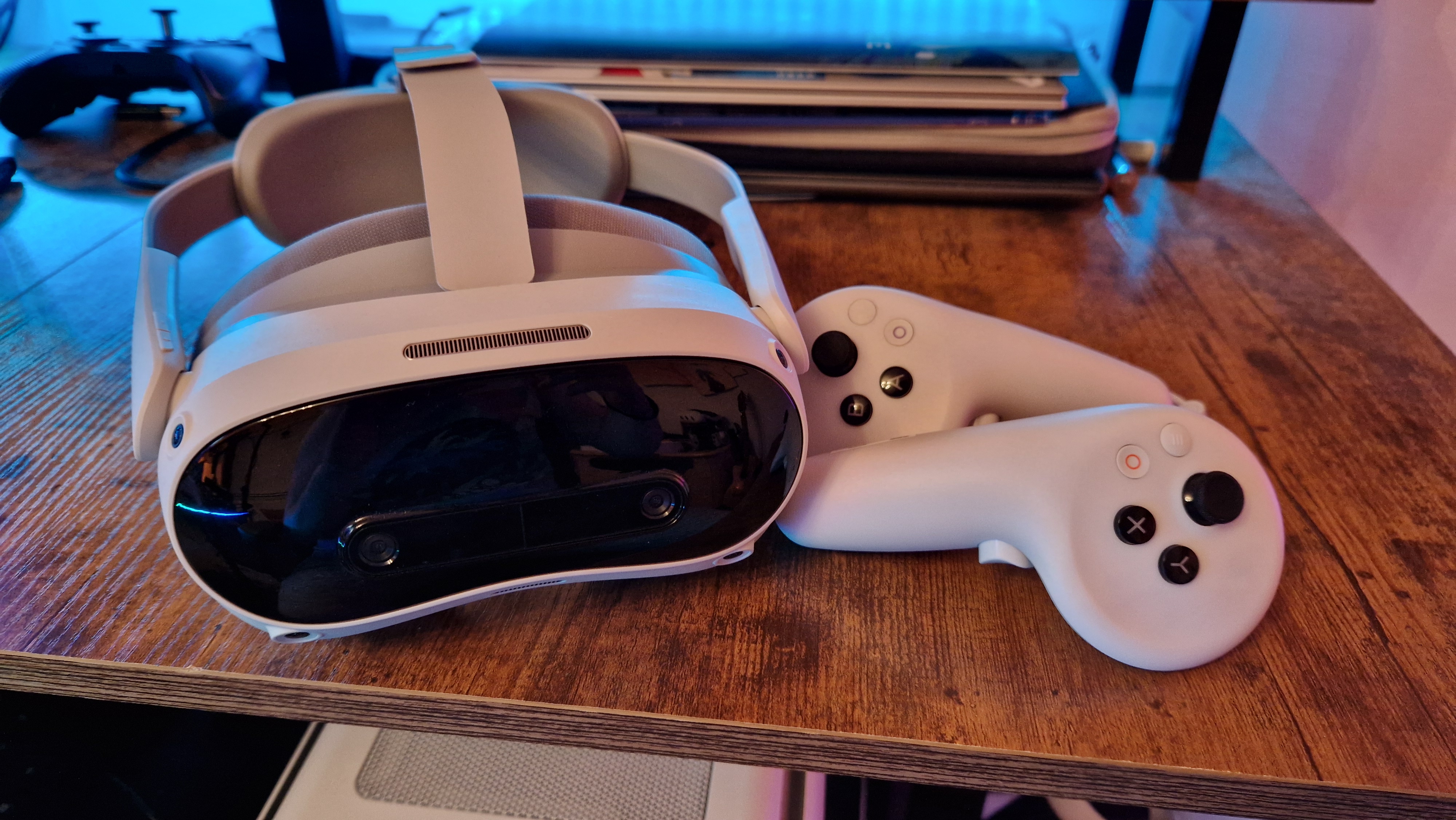
Beyond its clear rivalry with the Quest 3, the Pico 4 Ultra is a brilliant VR headset for gaming. It takes the prowess of a standalone mixed-reality headset to new heights, and I hope it becomes a popular alternative to Meta. For that to truly happen, however, it needs to enter the US market, which is an expansion I’m very eager to see. The 4 Ultra has a competitive price for its specs, and presents a viable device for gaming, spatial computing, and PC linking.
But is it better than the Quest 3? In terms of raw specs, the answer is a tentative yes. Unfortunately, they’re so close to call in different ways that it’s hard to give a definitive answer overall. In terms of a gaming experience, I did actually enjoy the Pico 4 Ultra more. It has a lighter feel and although feedback in the controllers wasn’t better, I liked their slightly larger form factor more. Then again, you’ve got more experiences to enjoy on Quest’s store, so it’s a tough one to call.
Overall, I’m just glad to see a very viable alternative enter the scene. If you’re interested in buying a Quest 3, I think you really ought to consider if the Pico 4 Ultra is a better option for you, because it could be.
How I tested the Pico 4 Ultra
I tested the Pico 4 Ultra over a period of around three weeks before this review. In that time, I used it for playing games, watching Disney+ and Netflix content, and some light spatial computing. I compared my time with the headset closely to my experience with the Meta Quest 2, 3, and Pro. At times, I switched between the Quest 3 and the Pico 4 Ultra to get a sense for how they both felt.
The games I used to test out the headset included Arizona Sunshine 2, Red Matter 2, Blade & Sorcery Nomad, Demeo, and Puzzling Places. I kept a close eye on battery life to determine how long the device lasts on a full charge. You can read more about our testing ethos by checking out the full GamesRadar+ Hardware Policy.
For flat-screen gaming, check out the best gaming TVs and the best gaming monitors. For a halfway house, take a look at the best curved gaming monitors.
One of my earliest memories is playing SuperMario64 and wondering why the controller I held had three grips, but I only had two hands. Ever since I've been in love with video games and their technology. After graduating from Edinburgh Napier University with a degree in Journalism, I contributed to the Scottish Games Network and completed an Editorial Internship at Expert Reviews. Over the last decade, I’ve been managing my own YouTube channel about my love of games too. These days, I'm one of the resident hardware nerds at GamesRadar+, and I take the lead on our coverage of gaming PCs, VR, controllers, gaming chairs, and content creation gear. Now, I better stop myself here before I get talking about my favourite games like HUNT: Showdown, Dishonored, and Towerfall Ascension. Location: UK Remote
